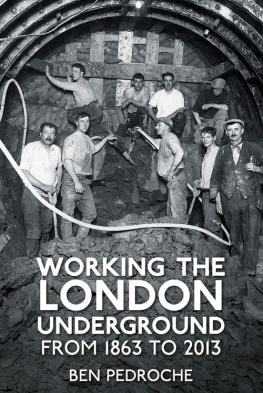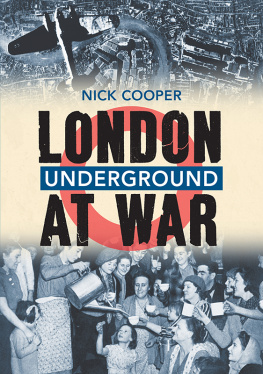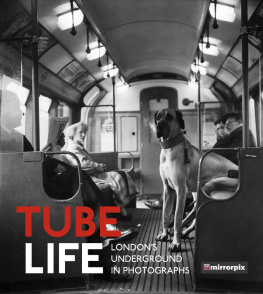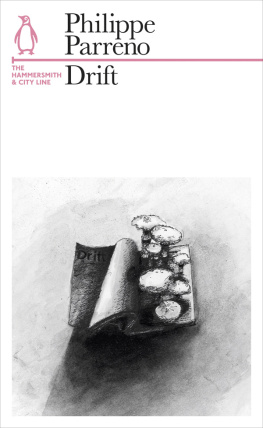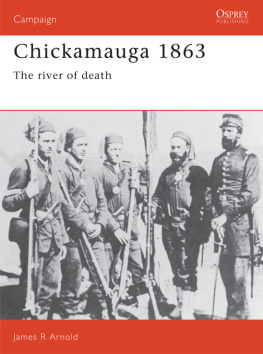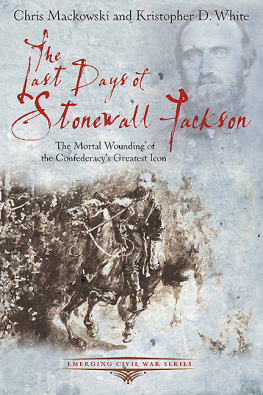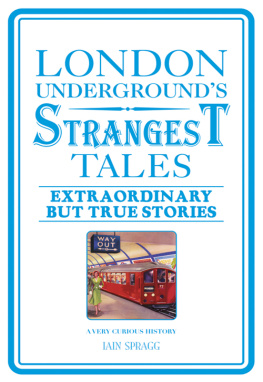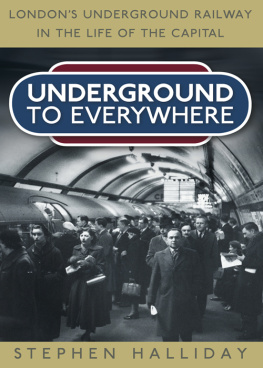Ben Pedroche - Working the London Underground : from 1863 to 2013
Here you can read online Ben Pedroche - Working the London Underground : from 1863 to 2013 full text of the book (entire story) in english for free. Download pdf and epub, get meaning, cover and reviews about this ebook. City: Stroud, Gloucestershire, year: 2013, publisher: The History Press, genre: Science fiction. Description of the work, (preface) as well as reviews are available. Best literature library LitArk.com created for fans of good reading and offers a wide selection of genres:
Romance novel
Science fiction
Adventure
Detective
Science
History
Home and family
Prose
Art
Politics
Computer
Non-fiction
Religion
Business
Children
Humor
Choose a favorite category and find really read worthwhile books. Enjoy immersion in the world of imagination, feel the emotions of the characters or learn something new for yourself, make an fascinating discovery.
- Book:Working the London Underground : from 1863 to 2013
- Author:
- Publisher:The History Press
- Genre:
- Year:2013
- City:Stroud, Gloucestershire
- Rating:3 / 5
- Favourites:Add to favourites
- Your mark:
- 60
- 1
- 2
- 3
- 4
- 5
Working the London Underground : from 1863 to 2013: summary, description and annotation
We offer to read an annotation, description, summary or preface (depends on what the author of the book "Working the London Underground : from 1863 to 2013" wrote himself). If you haven't found the necessary information about the book — write in the comments, we will try to find it.
Working the London Underground : from 1863 to 2013 — read online for free the complete book (whole text) full work
Below is the text of the book, divided by pages. System saving the place of the last page read, allows you to conveniently read the book "Working the London Underground : from 1863 to 2013" online for free, without having to search again every time where you left off. Put a bookmark, and you can go to the page where you finished reading at any time.
Font size:
Interval:
Bookmark:

Cover illustration: Underground tunnel construction work in progress at the Woodberry Grove site, north of Manor House Underground station, 1930 Tf L from the London Transport Museum collection
Thanks as always to my amazing wife Louise Pedroche for giving me so much support during the time it took to write this book, and for providing the many great photographs. I would also like to thank my family and friends, and everybody at the London Transport Museum. I am grateful for those who shared with me their knowledge of working for the London Underground, including Eric Stuart, Jim Bleasdale, Brian Parker and Daniel Newberry. Last but not least, thanks to Chrissy McMorris and everyone else at The History Press.
PART 1
PART 2
Stand on the platform at a busy London Underground station like Victoria or Kings Cross St Pancras at rush hour and youll see just how important the Tube is. Miles of subterranean tunnels form a network that keeps the city moving every day, with millions of Londoners and tourists depending on it to get them where they need to be.
With demand increasing every year, this is a transport system being crushed under the pressure of its own success. Delays, station closures and packed trains are a daily occurrence, causing much frustration to those who use the network every day. And yet use it we continue to do. It has become a London institution and an integral part of the life of anyone who lives and works in the nations capital.
The situation isnt much better above ground anyway. Londons roads are clogged with vans, buses and taxis, making what should be the shortest journey seem like a million miles. Trains are plentiful on the citys mainline rail network, but congestion on the lines in and out of major stations often leads to delays and cancellations here too.
Step back in time to Victorian London and the state of affairs on the roads was surprisingly much the same. By the mid-1850s the railways had arrived, allowing thousands of workers to travel into London every day for the first time. But rather than reach the busiest areas and the City of London, the railways instead created a network of lines around its fringes. Travelling onwards into central London required the use of horse-drawn transport, which led to major congestion along every main artery in the expanding metropolis.
The solution was to go beneath the streets, and the first line on what would later become the London Underground opened in 1863 on a route from Paddington to Farringdon. Ridiculed by the press at first, a sceptical public quickly began to embrace the concept of descending into the depths of a centuries-old city. Soon thousands of people were using the new underground railway. It served its purpose in easing the congestion on the roads, and additional lines were soon opened in order to meet the new demand.
This was during a time when Londons population was large, but nowhere close to the size of what the modern city has become. Step back to today, where more than 8 million people live in London, the problem has come full circle. The roads are full to the brim once again, but this time the problem is worse, because the great solution down below is also full to capacity.
Its an issue yet to be solved, but for now the London Underground continues to enjoy its well-deserved status as the worlds most iconic transport system. Its one of Londons most important assets, and at more than 150 years of age, its truly one of the greatest engineering works of all time.
A large part of what makes the system great is the people that use it, and the journeys it takes them on. But most important of all are the people behind the scenes that make it all possible. Its these people that Working the London Underground aims to look at, as well as how the system was built, and how it is run.
The pioneering work of early companies like the Metropolitan Railway, whose engineers, architects and workmen constructed the original cut-and-cover lines in the nineteenth century, is explored first. This is followed by a look at how the first set of Tube lines were built, as new construction methods allowed workers to burrow deeper than ever before, with more lines added over the course of the twentieth century.
The second half of the book uncovers the various jobs filled by some of the hundreds of workers needed to keep the system running. From the drivers who spend countless hours peering into dark and lonely tunnels, to the engineers dispatched to fix signal failures, its an account of the many unsung heroes that have kept the system flowing for over a century and a half.
Its often rare to find people who love their job, but many of those working on the London Underground seem proud to be part of something so uniquely special. The fact that the original route is still in operation is also a testament to the dedication and foresight of the early Tube workers. They were no doubt aware that they were helping to write a new chapter in the long history of London, and its a story that has since become an epic saga that shows no sign of coming to an end.
The book focuses on how the London Underground was built and how it is run. The text therefore avoids lengthy histories of each line, and the formation of the companies involved. There are many fantastic books that cover such areas in greater detail, including several of the ones listed in the References and Further Reading section. Historical timelines also shift back and forth where appropriate, and archived photos are used even to illustrate some modern practices.
The problem of congestion on Londons streets in the mid-nineteenth century was the result of a huge swell in population, and the success of the City of London as the financial capital of the British Empire. The roads and passageways in and around the City were packed with commuters. The wealthier workers arrived via the various new railway terminus stations. The poor tended to live on the outskirts of the Square Mile, in some of Londons most notorious Victorian slums.
The mainline railways had connected other parts of the country to London, but restrictions on building lines directly through the metropolis meant there was no way of travelling across central London and on to the City. Londons first generation of commuters was therefore required to walk or use early forms of public transport such as horse-drawn cab. There were many different proposals put forward for how the problem could be solved. Many were frivolous, and almost all were outlandish. Ideas included a proposal by Joseph Paxton, engineer of the Crystal Palace, who designed plans for an elevated railway enclosed inside a glass arcade.
Another of the novelty ideas was an atmospheric-powered railway proposed in 1845 by a man named Charles Pearson. A solicitor by trade, Pearson had a vision that a new inner-city railway could have a far deeper social benefit for the people of London than simply providing a quicker way from A to B.
Building a new railway, Pearson argued, would mean that people would no longer need to live close to where they worked, in cramped and dirty streets. His proposal was to connect many of Londons railway termini via a new line that would allow commuters to interchange between the two and therefore travel directly to their place of work from further afield. Building the railway would also be a chance to clear slum areas, as they would no longer be needed.
Next pageFont size:
Interval:
Bookmark:
Similar books «Working the London Underground : from 1863 to 2013»
Look at similar books to Working the London Underground : from 1863 to 2013. We have selected literature similar in name and meaning in the hope of providing readers with more options to find new, interesting, not yet read works.
Discussion, reviews of the book Working the London Underground : from 1863 to 2013 and just readers' own opinions. Leave your comments, write what you think about the work, its meaning or the main characters. Specify what exactly you liked and what you didn't like, and why you think so.

